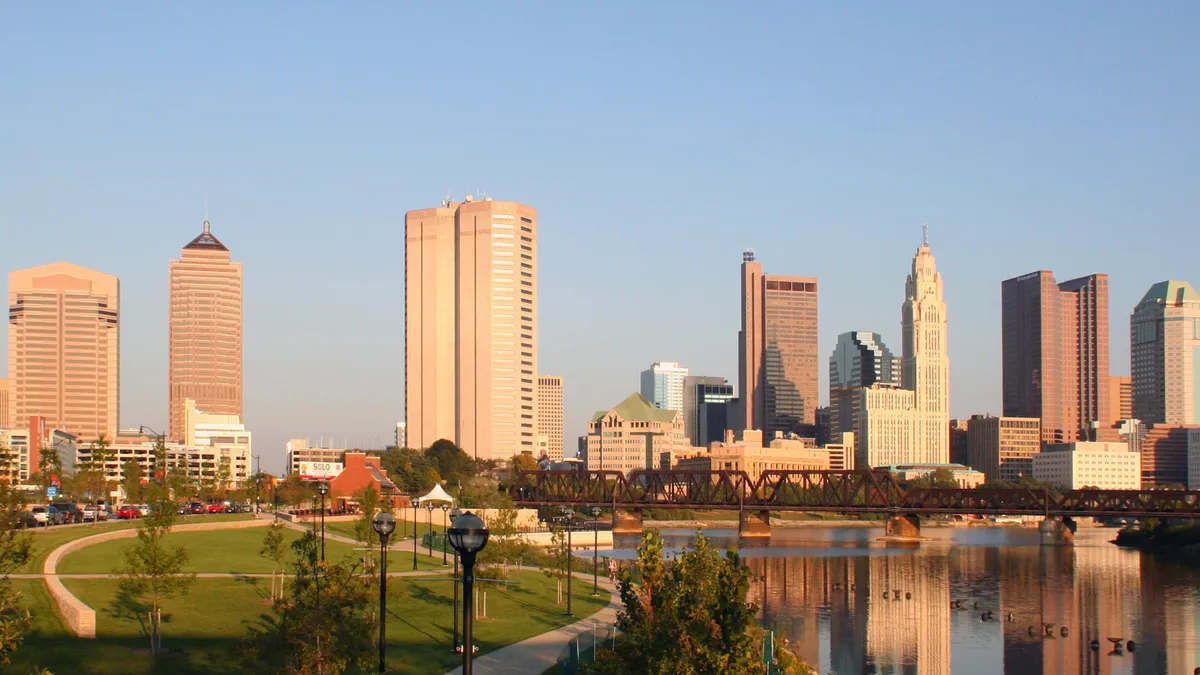Dive Brief:
- The U.S. Environmental Protection Agency (EPA) declared that Columbus, OH is the first city to move out of non-compliance with federal air quality standards for ground-level ozone, after three years of monitoring data showed the air has finally reached safe levels.
- By moving into attainment status with the 2015 standards, the Columbus region will no longer be subject to certain permitting restrictions and other economic penalties to reduce air pollution. The city credits cleaner transportation, increased public transit use and investments in clean energy for the air quality improvements.
- Many cities remain out of compliance with the standards; EPA has already proposed downgrading Denver, CO to a "serious" non-attainment status for the 2008 ozone standard, and is set to propose that areas around Chicago, Dallas-Fort Worth, Houston, San Diego, New York City, Connecticut and Nevada also be downgraded for violating that standard.
Dive Insight:
Ground-level ozone, or smog, is a toxic air pollutant that can exacerbate lung conditions and poses a risk to sensitive populations. A recent study in the medical journal JAMA, which tracked subjects across six U.S. cities, found that breathing dirtier air was associated with increases in emphysema; even a small increase in ozone was associated with damage equivalent to smoking a pack of cigarettes every day for 29 years.
In 2015, the EPA lowered the previous standard of 75 parts per billion (ppb), set in 2008, to 70 ppb, a challenge for many major cities that were already out of compliance with the higher standard (the Clean Air Act requires that the standards be updated every five years based on a review of the best available science). The latest standard has been controversial; public health groups said it was not sufficient to protect vulnerable citizens, and industry groups charged that it was too restrictive. A federal court on Friday upheld the standards in response to a challenge from industry groups and conservative states.
Although ozone levels have dropped over recent decades, it remains a problem for cities, especially as evidence of negative health effects pile up. According to the American Lung Association, 40% of Americans live with unhealthy air quality levels, and many cities are still plagued with unhealthy ozone. Reductions are required through the Clean Air Act, and many cities have taken steps to drastically cut traffic pollution in an attempt to limit ozone.
Ozone results when nitrogen oxide and volatile organic compound emissions mix in the presence of heat and sunlight, so addressing it means cutting a variety of sources of pollution. In Columbus, a good amount of reduction came from cleaner transportation. Through Smart Columbus initiatives, the city has boosted the use of mass transit and brought in more electric vehicles, including in its taxi fleet. Reducing vehicle emissions cuts down on nitrogen oxide, one of the biggest pollution sources in urban areas.
Through the American Cities Climate Challenge, Columbus has also developed clean energy projects and expanded property-assessed clean energy financing, making it easier to install and use renewables in the region. "Even though we have accomplished a great deal, we are just getting started," said Alana Shockey, assistant director for sustainability with the City of Columbus.











